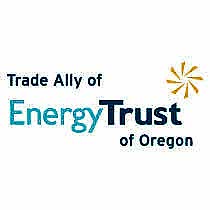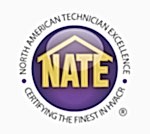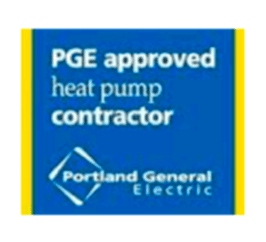There are a lot of acronyms in the HVAC industry and learning what each is can be challenging as you navigate all the different heating systems available. Anyone looking to update their heating system should be aware of what to look for in terms of energy efficiency.
This article describes what HSPF ratings are, how they’re calculated, and what a good HSPF rating is.
What is HSPF Rating?
HSPF is a metric used in the evaluation of air source heat pumps when in heating mode. It stands for Heating Seasonal Performance Factor and it measures how well your heat pump will perform during the heating seasons.
HSPF measures heat output over a heating season to the electricity used. Heat pumps with a higher HSPF rating are a smart investment that can save you a significant amount of money on your energy bill while also allowing for more precise humidity and temperature control.
What is a Good HSPF Rating for a Heat Pump?
In 1992 the U.S. Department of Energy began setting minimum standards for energy efficiency in appliances. The first minimum allowed HSPF rating was 6.8 and in 2006 it was raised to 7.7. In 2015 the HSPF rating minimum was raised again to 8.3 and in 2023 that will go to 8.8. If you are shopping for an efficient heat pump a good rating is 8.2 but it is not a bad idea to anticipate the new rate of 8.8 HSPF.
If you are looking for energy efficiency and eco-friendliness then an HSPF rating of 9.0 or higher will reduce your carbon footprint and save you money on your monthly energy cost. Although some of the most efficient air-source heat pumps have a 13 HSPF rating, anything above 10 HSPF is classified as a high-efficiency model.
Difference between HSPF and SEER
Like the SEER (Seasonal Energy Efficiency Ratio) rating, the HSPF is a measure of energy efficiency for heating equipment in much the same way the SEER rating is for cooling devices. It lets you know how much your electricity bill will change if you operate a heat pump with a high HSPF score.
When considering heat pumps, keep in mind that HSPF only applies to the heating mode. Look at the SEER to determine how efficient your heat pump is when operating in cooling mode. To obtain an Energy Star rating, your heat pump must have a SEER of 15 or more.
Benefits of a Higher HSPF Rating
Replacing your old heating and cooling system with a high-efficiency heat pump that has an HSPF rating of 10 or more may offer several advantages. Some of the benefits include:
- A high-efficiency heat pump will save you money on your monthly energy bill because it uses less electricity than older models.
- The more energy-efficient heat pumps can also give more accurate temperature and humidity regulation keeping you more comfortable
- Better efficiency means a greener footprint.
Regional differences or government minimums
When it comes to purchasing a new HVAC system, minimum energy efficiency standards play a part in which air conditioners and heat pump HVAC dealers are permitted to sell you, depending on your area. Just because a company sells products with lower energy efficiency ratings doesn’t mean that they can sell them to you if you are in a region with higher minimum requirements.
Across the U.S. the minimum efficiency standard for air source heat pumps is an 8.2 HSPF rating. However, heat pumps also must meet minimum SEER rating standards for a region.
How Does HSPF Rating Affect Costs?
Higher HSPF ratings typically translate into a higher price. Heat pumps with a 9 HSPF rating are going to be more expensive than one with an 8.2 HSPF rating, so you must decide if the savings on your heating bill is worth the additional upfront investment.
Are High HSPF Heat Pumps Worth It?
Determining if the price of a high HSPF rated heat pump is worth the investment will mostly be determined by your climate and how much energy it takes to heat your house each year. For example, if it costs $2400 a year to heat your home with an 8.2 HSPF heat pump but with a 9 HSPF heat pump it only costs you $2000 that is a $400 savings each year. It will only take a few years to pay off the heat pump and enjoy the extra savings each year.
But if you don’t live in a climate that requires a lot of heat output, a lower HSPF rated heat pump may be just what you need. However, if your main objective is to lower your carbon impact, a higher HSPF heat pump may be worth the higher price tag.
HSPF Ratings Chart

Which HSPF is Right for You?
There are different factors that go into choosing the “right” heat pump for your home. A heat pump is an excellent choice for regions that tend to see more mild weather, like the Portland area. Heat pumps are “properly” sized for your house.
An HVAC specialist will calculate the size of your home’s heat pump so that it can efficiently warm and cool it based on square footage, the number of rooms, and flooring in the structure during installation.
Where to Look for High HSPF Rated Systems
Your local HVAC company is the best location to seek a high HSPF rated heat pump system. While you may locate high heat pump rated systems at a big box store, it is best to purchase your system based on your home rather than price and ratings.
Proper installation plays a key role in your heat pump unit’s ability to keep your home warm and comfortable. An HVAC professional will assess your property for insulation, square footage, windows, and other factors that impact how well your heat pump keeps your home warm. An HVAC professional will assist you in selecting the size, pricing, and HSPF rating that are ideal for you and your home based on this information.
Jacobs has Options for HSPF Systems
HSPF ratings, heat pump, or air conditioning choices can be overwhelming. A Jacobs Heating & Air Conditioning expert can help you navigate the options. If you know that it is time for an HVAC upgrade or you want to replace your current HVAC unit with a high-efficiency system, give us a call for a quote. Our technicians can perform a full inspection of your current system and your home. We offer a variety of flexible financing options and we’ll walk you through the process of how to pay for your new system.
Avoid extra costs and fewer repairs by scheduling a tune-up for your existing system before issues arise. Our maintenance plans keep your system running like clockwork without any stress or hassle. No matter what you need we’re always just a phone call away. You are welcome to review our statement on COVID-19 and how we’re taking precautions to protect you, our team, and our communities.










